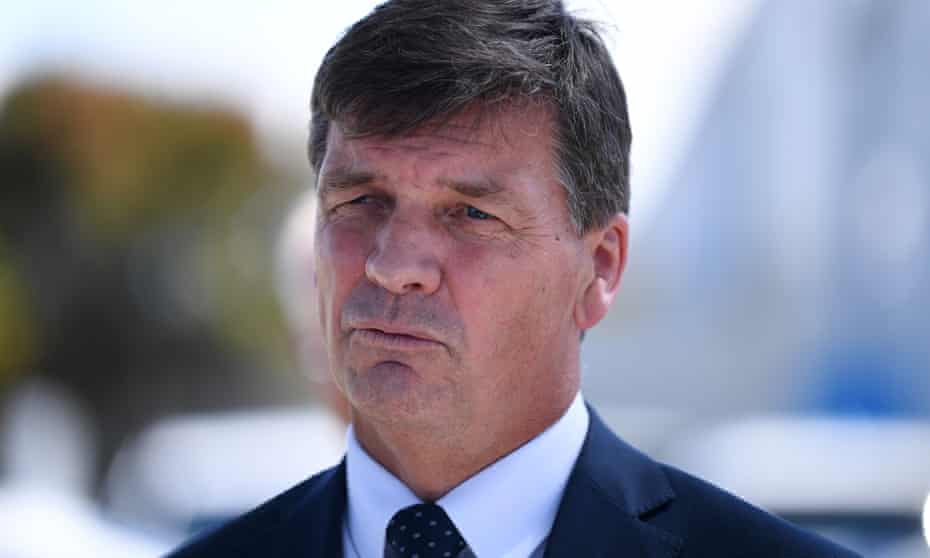Extract from The Guardian
If the world followed Australia on emissions reduction, the planet would heat by about 3C, one expert warns
- Temperature Check is a weekly column examining claims about climate change made by governments, politicians, business and in the media. See the latest column and follow the series here

Last modified on Thu 18 Nov 2021 03.32 AEDT
The Glasgow climate summit ended early on Sunday morning, but before the clock had struck noon the Morrison government had already said it would be ignoring one of its key outcomes.
More than 190 nations at the summit – including Australia – signed a pact requesting countries “revisit and strengthen” their 2030 targets to cut greenhouse gas emissions at the Cop27 climate summit in Egypt next year.
Hours later, the Morrison government said its target to cut emissions by 26% to 28% by 2030, based on levels in 2005, was already fixed. There will be no revision.
But the request at Cop26 to improve those targets next year included an important clause.

Those targets should “align with the Paris Agreement temperature goal” of keeping global warming to well below 2C and “pursue efforts” towards a 1.5C limit.
In an attempt to push back against criticism over their reluctance to set a new 2030 target, both prime minister Scott Morrison and emissions reduction minister Angus Taylor have instead held up projections of the country’s emissions.
During his speech to the summit, Morrison said – without qualification – that Australia’s emissions in 2030 would be 35% below 2005 levels.
So if Australia did actually reduce emissions by this amount, would that align with the Paris temperature goals?
‘A huge mess’
After the conference, Taylor told the ABC that “what really counts here” was getting to the overall global outcome.
Does the government’s projection of a 35% emissions reduction “support the Paris agreement goals” as Taylor claims?
“Absolutely not,” says Bill Hare, the chief executive of Climate Analytics – a respected group of analysts that helps produce the global Climate Action Tracker.
Hare said: “Australia would need to make 60% or more reductions by 2030 to be in line with the Paris agreement and to be consistent with what the European Union and the UK are doing.
“If all other countries followed a similar level of emissions reduction to Australia compared to their economic circumstances, then the world would warm by about 3C.
“The IPCC has been very clear that, on the objective science, by the time you get to 2.5C and 3C warming, we are facing catastrophic consequences for natural and human systems.”
Hare
says the Great Barrier Reef would be “well and truly dead” with warming
of 3C, with food and water supplies around the world “in a lot of
trouble”.
“It’s a huge mess. There’s every reason to avoid that,” says Hare.
Morrison’s assessment of a 35% reduction in emissions is far rosier.
“That’s what we’re going to achieve and that’s what actually matters. What matters is what you actually achieve,” he said.
High school denial
Despite running a campaign ahead of Glasgow that was nominally supportive of a target to reach net zero greenhouse gas emissions by 2050, the climate science denialism of many of News Corp Australia’s key commentators continues.
On Monday, Andrew Bolt screamed the “global warming scare is based on lies.”
On Sunday, longtime denialist Piers Akerman raised a furry old chestnut of the climate science denial movement and gave it new life in his column.
Because the greenhouse gas CO2 is a small percentage of the atmosphere, we apparently shouldn’t worry about it.
Akerman wrote: “Activists ignore the science which shows that CO2, which is demonised, makes up 0.04 per cent by volume of the atmosphere and 95 per cent of it comes from natural sources, such as volcanoes and the oceans.”
Akerman is playing a lame and dishonest trick on his readers that is undone with any high school understanding of the greenhouse effect.
Most of the atmosphere is made up of gases that don’t contribute to the greenhouse effect (nitrogen, oxygen and a bit of argon) and aren’t relevant here.
Natural sources of CO2 are also irrelevant. The problem comes when you take CO2 that has been locked away for tens of millions of years in the form of coal, oil and gas, and then burn it – adding that CO2 to the atmosphere.
What are relevant are the changes to the amount of greenhouse gases which actually make up less than 1% of the atmosphere.
But even then, percentages are much less relevant because the gases don’t warm the planet at the same rate (for example, methane is more potent than carbon dioxide, but it doesn’t stay in the atmosphere for as long).
The amount of CO2 in the atmosphere has gone up by about 20% in the last 20 years. We are now at about 420 ppm (parts per million) – levels not seen on Earth for at least four million years.
If Akerman thinks a tiny percentage of something means it’s not relevant, then consider that raising your blood alcohol level from zero to 500ppm means you can’t legally drive a car.
No comments:
Post a Comment